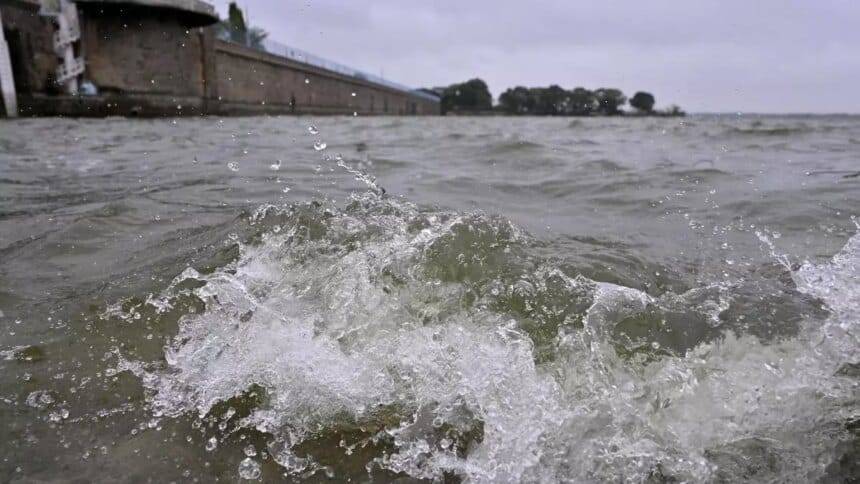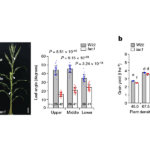Main Points In Hindi (मुख्य बातें – हिंदी में)
-
भंडारण स्तर में वृद्धि: भारत के प्रमुख जलाशयों का भंडारण स्तर 1 प्रतिशत अंक बढ़कर 88 प्रतिशत हो गया है, जिसमें 50 जलाशय पूरी तरह भरे हुए हैं।
-
कम भंडारण वाले राज्य: पंजाब, हिमाचल प्रदेश और नागालैंड में जलाशयों का भंडारण सामान्य से कम है, जबकि कई अन्य राज्यों में भंडारण स्तर 80 प्रतिशत से ऊपर है, जो खेती के लिए सकारात्मक संकेत है।
-
मानसून का प्रभाव: सामान्य से 8 प्रतिशत अधिक वर्षा ने जलाशय के भंडारण स्तर को बढ़ाने में मदद की है, विशेष रूप से मध्य और दक्षिणी भारत में अधिक लाभ देखा गया है।
-
राज्यवार भंडारण स्थिति: बिहार को सबसे अधिक लाभ हुआ है; उसके चारों ओर जलाशय का भंडारण पिछले वर्ष की तुलना में बढ़कर 56 प्रतिशत हो गया है।
- उत्तरी क्षेत्र की चुनौतियाँ: उत्तर-पश्चिमी क्षेत्र में अधिक वर्षा होने के बावजूद, पंजाब और हिमाचल प्रदेश जैसे राज्यों में जल储 रखने की स्थिति कमजोर बनी हुई है।
Main Points In English(मुख्य बातें – अंग्रेज़ी में)
Here are the main points of the article regarding India’s major reservoirs:
-
Increase in Storage Levels: The storage levels of India’s major reservoirs have increased by 1 percentage point this week, with a current storage at 88% of the total capacity of 158.529 billion cubic meters (BCM), totaling 180.852 BCM. This level is higher than both the previous year and the average of the last decade.
-
Regional Discrepancies: Despite overall improved storage, three states—Punjab, Himachal Pradesh, and Nagaland—report storage levels below normal, with deficits of 65%, 20%, and 11%, respectively. Meanwhile, 60 reservoirs across the country are above 80% capacity, which is a positive sign for the ongoing Rabi sowing season.
-
Impact of Monsoon: The reservoirs benefited from a surplus monsoon, receiving 8% more rainfall than usual, with central and southern India experiencing the most significant increases at 19% and 14% respectively. Although the monsoon has started to withdraw, additional rainfall is still expected, particularly in southern and eastern regions.
-
State-Level Benefits: Bihar has seen the most significant gains, with reservoir storage increasing from 34% to 56% of capacity. The western region’s reservoirs are at 97% of capacity, with high levels in states like Gujarat, Maharashtra, and Goa.
- Sector-Wise Distribution: The eastern region shows strong reservoir performance with 86% storage, while the central region has 91% storage with Madhya Pradesh having the highest at 97%. In the southern region, Telangana leads with a storage level of 99%.


Complete News In Hindi(पूरी खबर – हिंदी में)
भारत के प्रमुख जलाशयों में भंडारण स्तर इस सप्ताह 1 प्रतिशत अंक बढ़ गया और उनमें से 50 भर गए हैं। हालाँकि, केंद्रीय जल आयोग (सीडब्ल्यूसी) के आंकड़ों से पता चलता है कि तीन राज्यों में भंडारण सामान्य से कम था।
प्रमुख जलाशयों के लाइव स्टोरेज पर सीडब्ल्यूसी के साप्ताहिक भंडारण बुलेटिन के अनुसार, 158.529 बीसीएम क्षमता पर भंडारण 180.852 बिलियन क्यूबिक मीटर (बीसीएम) का 88 प्रतिशत था। यह पिछले वर्ष के साथ-साथ सामान्य (पिछले 10 वर्षों) से भी अधिक है। हालाँकि, 12 में स्तर 50 प्रतिशत से नीचे था।
राज्यों में, पंजाब (-65 प्रतिशत), हिमाचल (-20 प्रतिशत) और नागालैंड (-11 प्रतिशत) में भंडारण सामान्य से कम था। 60 जलाशयों में भंडारण 80 प्रतिशत से ऊपर है, जो चालू रबी बुआई सीजन के लिए अच्छा संकेत है।
अत्यधिक मानसून
सामान्य से 8 प्रतिशत अधिक वर्षा ने भंडारण स्तर में सुधार करने में मदद की है, मध्य और दक्षिणी भारत में क्रमशः 19 प्रतिशत और 14 प्रतिशत अधिक वर्षा के साथ सबसे अधिक लाभ हुआ है। हालाँकि मानसून की वापसी शुरू हो गई है, लेकिन अधिक बारिश का अनुमान लगाया गया है, खासकर दक्षिणी और पूर्वी क्षेत्रों में। इससे स्टोरेज को और बढ़ावा मिलने की संभावना है।
हालाँकि मानसून अवधि के दौरान उत्तर-पश्चिमी क्षेत्र में 4 प्रतिशत अधिक वर्षा हुई, लेकिन उत्तर-पूर्व के अलावा पंजाब और हिमाचल जैसे राज्यों में कम वर्षा हुई है। सीडब्ल्यूसी बुलेटिन के अनुसार, उत्तरी क्षेत्र के 11 जलाशयों में भंडारण 19.836 बीसीएम क्षमता का 68 प्रतिशत 13.527 बीसीएम था। पिछले साल इसी दौरान यह स्तर 85 फीसदी था.
सबसे ज्यादा फायदा बिहार को हुआ
पूर्वी क्षेत्र के 25 जलाशयों में से 20.798 बीसीएम में से 86 प्रतिशत यानी 17.858 बीसीएम में भंडारण हुआ, जो पिछले साल से अधिक है। पिछले सप्ताह हुई बारिश से भंडारण में सुधार करने में मदद मिली और बिहार को सबसे अधिक फायदा हुआ। इसका भंडारण क्षमता का 34 प्रतिशत से बढ़कर 56 प्रतिशत हो गया।
पश्चिमी क्षेत्र के 50 जलाशयों में भंडारण 37.357 बीसीएम क्षमता का 97 प्रतिशत बढ़कर 36.198 बीसीएम हो गया। उनमें से अट्ठाईस भरे हुए थे और गुजरात, महाराष्ट्र और गोवा में स्तर क्रमशः 95 प्रतिशत, 98 प्रतिशत और 100 प्रतिशत था।
मध्य क्षेत्र के 26 जलाशयों में से, स्तर 48.227 बीसीएम क्षमता का 91 प्रतिशत या 44.103 बीसीएम था। प्रमुख कृषि प्रधान राज्य मध्य प्रदेश में क्षमता का 97 प्रतिशत के साथ स्तर सबसे अधिक था, इसके बाद 90 प्रतिशत के साथ उत्तराखंड का स्थान था।
दक्षिणी क्षेत्र के 43 जलाशयों में, भंडारण 54.634 बीसीएम क्षमता का 86 प्रतिशत 46.843 बीसीएम था। तेलंगाना में भंडारण सबसे अधिक 99 प्रतिशत था, इसके बाद कर्नाटक में 92 प्रतिशत था। तेलंगाना और आंध्र प्रदेश के जलाशय क्षमता का 93 प्रतिशत भर गए। क्षेत्र के बाकी राज्यों में यह स्तर 70 प्रतिशत से नीचे था।
Complete News In English(पूरी खबर – अंग्रेज़ी में)
This week, the storage levels in India’s major reservoirs increased by 1 percentage point, with 50 of them now full. However, data from the Central Water Commission (CWC) indicates that three states have storage levels below normal.
According to the CWC’s weekly storage bulletin, the total storage capacity of the major reservoirs is 158.529 billion cubic meters (BCM), and currently, 180.852 BCM is filled, which is 88% of capacity. This is higher than last year and the average of the last 10 years. However, there are 12 reservoirs where the levels are below 50%.
In some states, storage levels are concerning: Punjab (-65%), Himachal Pradesh (-20%), and Nagaland (-11%) are all below normal. On a positive note, 60 reservoirs have storage levels over 80%, indicating good prospects for the ongoing Rabi sowing season.
Impact of Heavy Monsoon
This year’s rainfall, which is 8% above normal, has helped improve storage levels, especially in central and southern India, where rainfall has exceeded 19% and 14%, respectively. Although the monsoon retreat has started, more rain is predicted, particularly in southern and eastern regions, which could further boost storage levels.
While the northwestern region received 4% more rainfall during the monsoon season, states like Punjab and Himachal Pradesh experienced below-normal rainfall, aside from the northeastern region. According to the CWC bulletin, storage in 11 reservoirs in the northern region is at 68% of the 19.836 BCM capacity, compared to 85% during the same period last year.
Bihar Benefits the Most
In the eastern region, out of 25 reservoirs, storage reached 86%, or 17.858 BCM of the 20.798 BCM total, which is an increase from last year. The recent rainfall significantly improved storage levels, especially benefiting Bihar, where storage rose from 34% to 56%.
In the western region, 50 reservoirs have reached 97% of their 37.357 BCM capacity, totaling 36.198 BCM. Among these, 28 are full, with storage levels at 95% in Gujarat, 98% in Maharashtra, and 100% in Goa.
In the central region, storage in 26 reservoirs is at 91%, or 44.103 BCM out of a total capacity of 48.227 BCM. Madhya Pradesh leads with storage at 97%, followed by Uttarakhand at 90%.
In the southern region, 43 reservoirs hold 86% of the 54.634 BCM capacity, totaling 46.843 BCM. Telangana has the highest storage at 99%, followed by Karnataka at 92%. The reservoirs in Telangana and Andhra Pradesh are 93% full, while other states in the region have levels below 70%.




